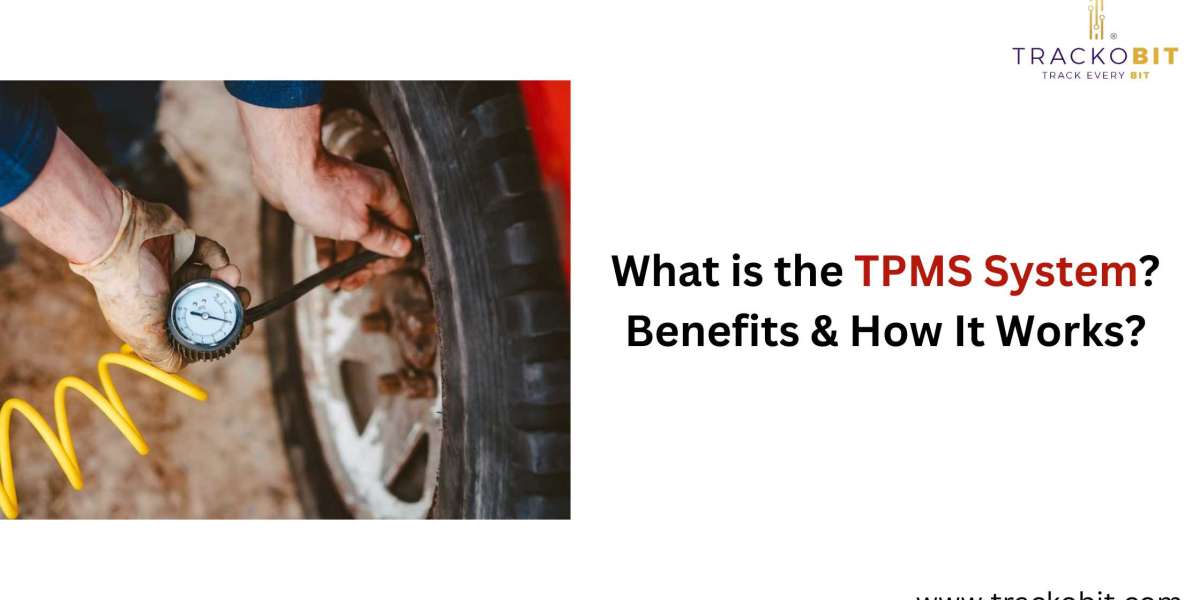Tyre Pressure Monitoring System (TPMS) can be defined as a health monitor for your vehicle's tires. Just like health monitors help in keeping track of vital signs of the human body such as blood pressure and heart rate, TPMS as a part of a comprehensive fleet management system keeps a watchful eye on the vital signs of your vehicle’s tyres (the air pressure within them).
Through this piece, we’ll learn everything about TPMS from definition to features. Stay tuned till the end to unfold this interesting solution.
What is TPMS and How Does it Work?
Tire Pressure Monitoring System(TPMS) is a solution designed to constantly monitor air pressure in a vehicle's tires. It aims at maintaining the recommended pressure range of the tires for the purpose of reducing accidents caused by over or underinflation of tyres.
It comprises small electronic sensors installed in each wheel of the vehicles, these sensors fetch air pressure data from the tyres and send it to the fleet management software. If there are air pressure fluctuations in multiple tyres of the vehicles, the system shows a yellow warning light on the dashboard to alert the drivers.
Not only the drivers, but fleet managers also receive instant notifications if the air pressure in the tires goes 20% to 30% more or less than the recommended range. All the data is received on the comprehensive GPS vehicle tracking software.
Types of TPMS
Let’s dive into the two main categories of TPMS to understand their role in ensuring good tyre health;
Direct TPMS | Indirect TPMS |
This system uses the sensors installed in each tyre to monitor their air pressure. If the pressure range exceeds or lowers the set air pressure range, the system sends quick alerts to the managers and warns the drivers through the dashboard warning sign. |
|
Provides accurate reading of the air pressure of each tyre. | Doesn’t offer accurate readings of tyre pressure. |
Requires regular maintenance | Requires less maintenance as compared to direct systems. |
Expensive | Cheaper as compared to direct TPMS |
Long-lasting sensors | Lifetime of sensors is comparatively less than direct TPMS |
Also Read: Tire Pressure Monitoring System – Working, Benefits and Cost
Four Must-Haves in a Tyre Pressure Monitoring System
Here are the top four must-have features in an ideal TPMS:
Real-Time Tyre Pressure Monitoring
TPMS offers real-time tire pressure updates, helping managers and drivers to know the condition of their tires. This feature aids timely intervention when the pressure deviates from the set ranges.
As tyre pressure gets monitored in real-time, drivers get the proper tyre pressure in each tyre, reducing wear and tear and also the accidents caused by over or underinflated tyres.
Sensor Integration
A suitable tyre pressure monitoring system must offer seamless sensor integration with all tyre pressure monitoring sensors to offer accurate air pressure readings. This functionality makes TPMS user-friendly and ensures the seamless transfer of air pressure data to the software.
Detailed Tyre Health Reports
This feature helps fleet managers to go beyond tyre pressure monitoring and get valuable insights on the overall condition of the vehicle’s tyres. This further helps them detect issues of uneven wear and lets them take immediate corrective measures to prevent sudden breakdowns.
Tyre Temperature Monitoring
Tyre pressure is sensitive to temperature deviations. A sudden rise in tyre temp causes the expansion of air inside the tyre whereas, a cold temp leads to tyre contraction. Thus it becomes important to monitor the tyre temp as well. This feature of TPMS sends temp readings of each tyre in real-time, keeping the managers updated.
Importance of TPMS
The importance of the Tyre Pressure monitoring system can’t be overstated in maintaining fleet safety, minimizing maintenance costs, and much more.
Enhanced Safety
TPMS acts as a safety tool for vehicles. Continuously monitoring tyre pressure, helps in reducing wear and tear and prevents accidents caused by over or underinflated tyres. Real-time tyre temperature and pressure readings help managers ensure that their vehicle is running at optimal tyre pressure at all times.
Reduced Maintenance/ Repair Costs
TPMS helps fleet managers reduce maintenance or repair costs by helping them correct tire issues before they lead to unexpected and expensive breakdowns. This approach further helps in keeping the tires well-maintained and also extends their lifespan. TPMS systems when integrated with fuel monitoring systems can help reduce exponent fuel costs.
Fuel Efficiency
Overinflated tyres reduce traction between the road and tyre and can cause uneven tyre wear, on the other hand, uninflated tyres increase rolling resistance requiring more fuel and energy to move the vehicle.
With the help of detailed tyre reports offered by TPMS which highlight over or under–inflated tires, fleet managers can improve fuel efficiency by maintaining the recommended tyre pressure range.
However, such a system alone won’t help reduce pressure on tyre. Fleet managers need to onboard capable driver behavior monitoring solutions that help them keep track of their drivers' driving skills resulting in harsh acceleration, braking or cornering. All the factors eventually cause strain on the vehicle’s tyres.
It’s a Wrap!
Tyre pressure monitoring software has emerged as a crucial technology for ensuring vehicle safety, health, and fleet management. Acting like a vigilant health monitor, it ensures the optimal air pressure in each tyre of the vehicle, reducing accidents caused by over or underinflated tyres. If you’re a fleet business looking for a suitable TPMS here are must-have features- real-time pressure monitoring, sensor integration, detailed tyre health reports, and temp monitoring.
Look no further…
TrackoBit’s tyre pressure monitoring system is exactly what you need. Being a complete package of the must-have features, it helps you maintain healthier tyres and a safer fleet. Know more about what TrackoBit can do for you.
Hear from the experts, Schedule a demo today!













